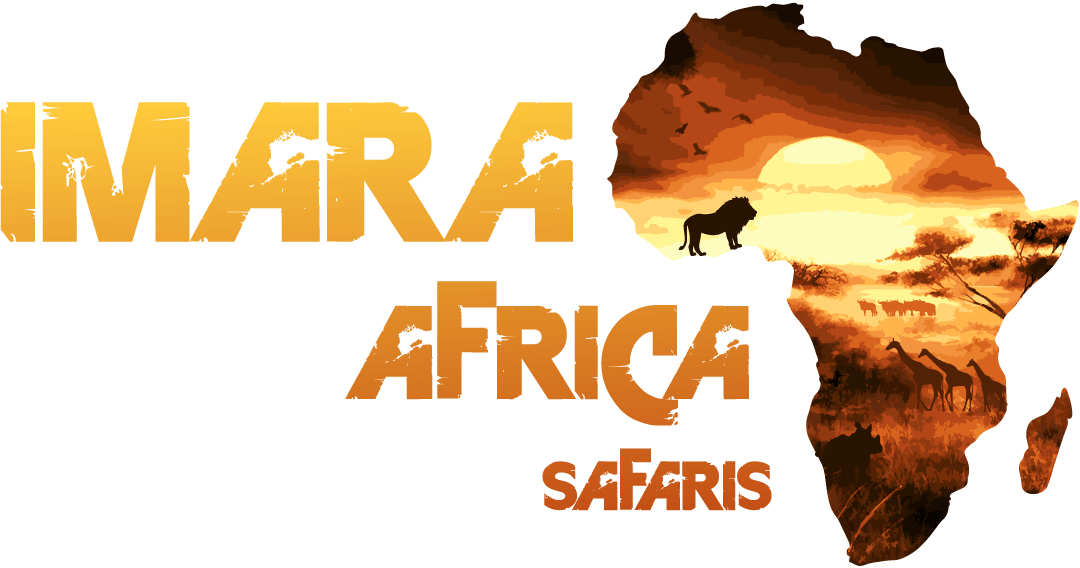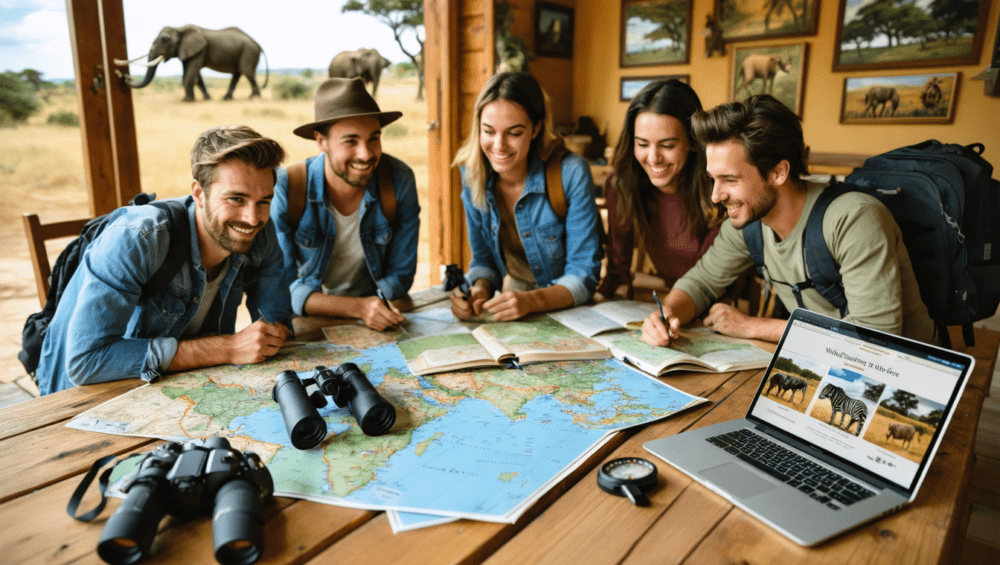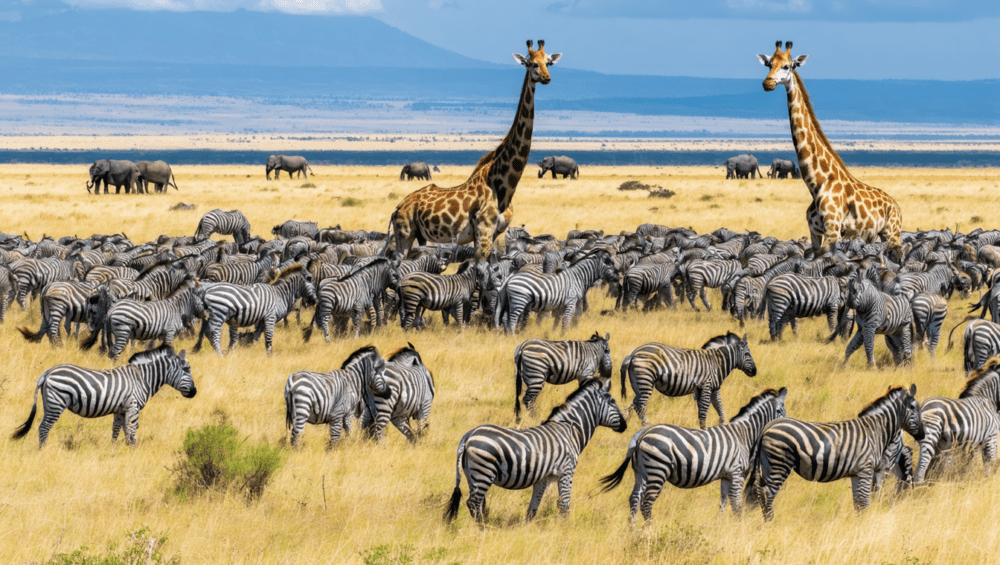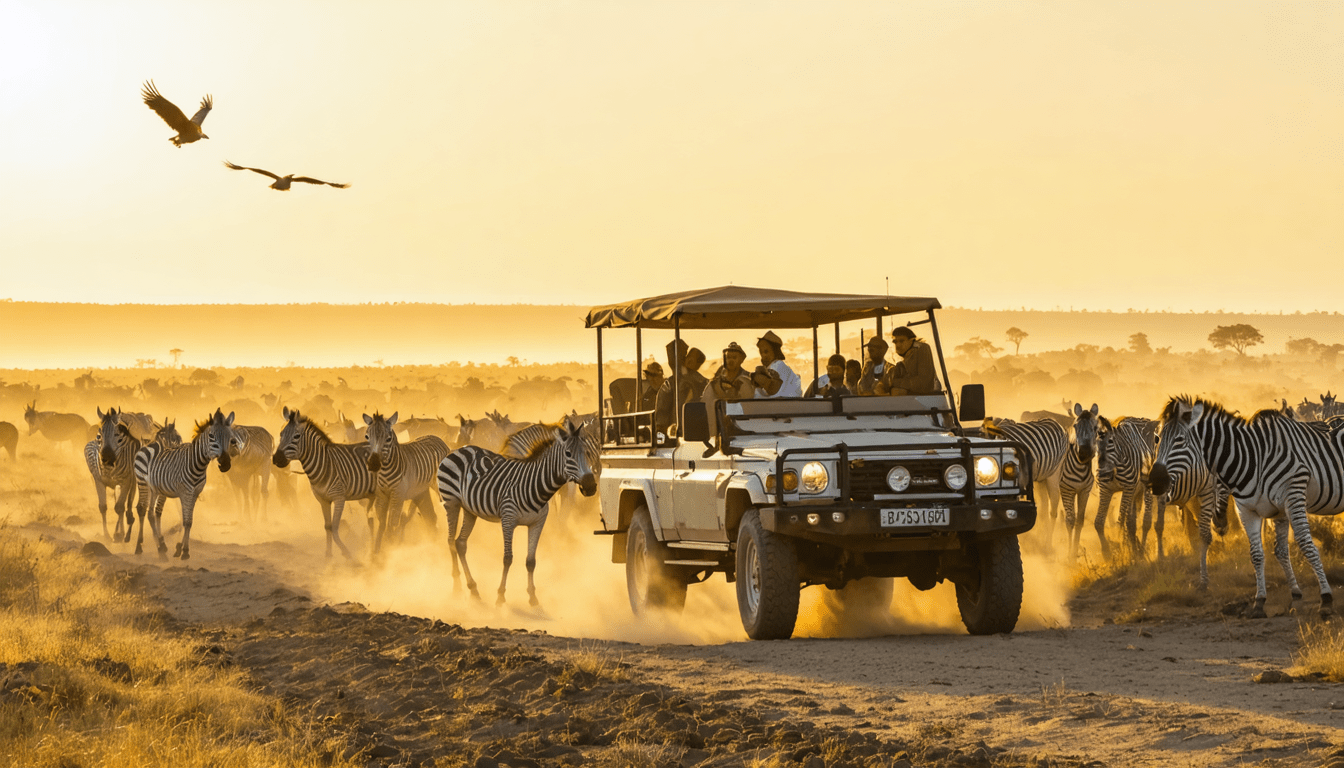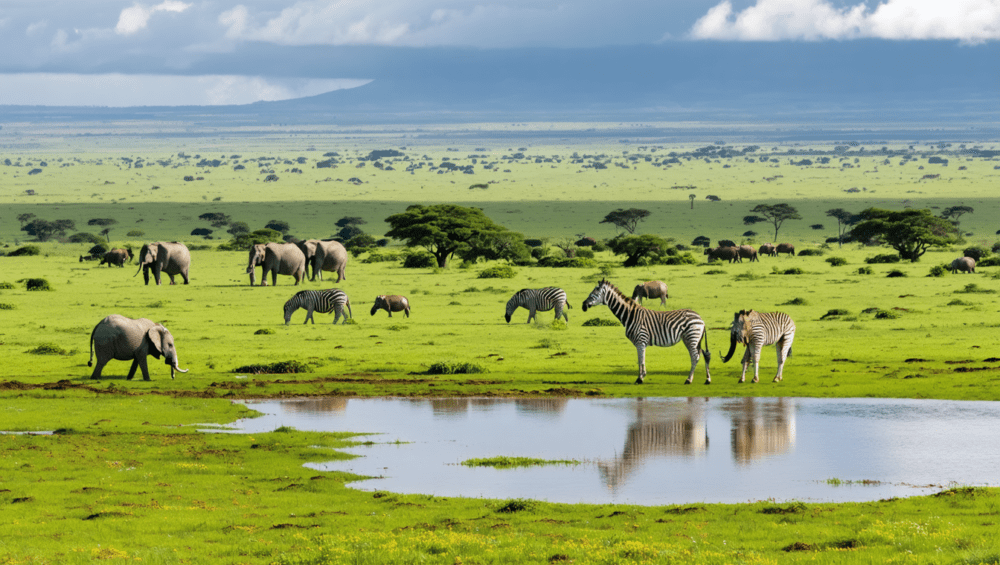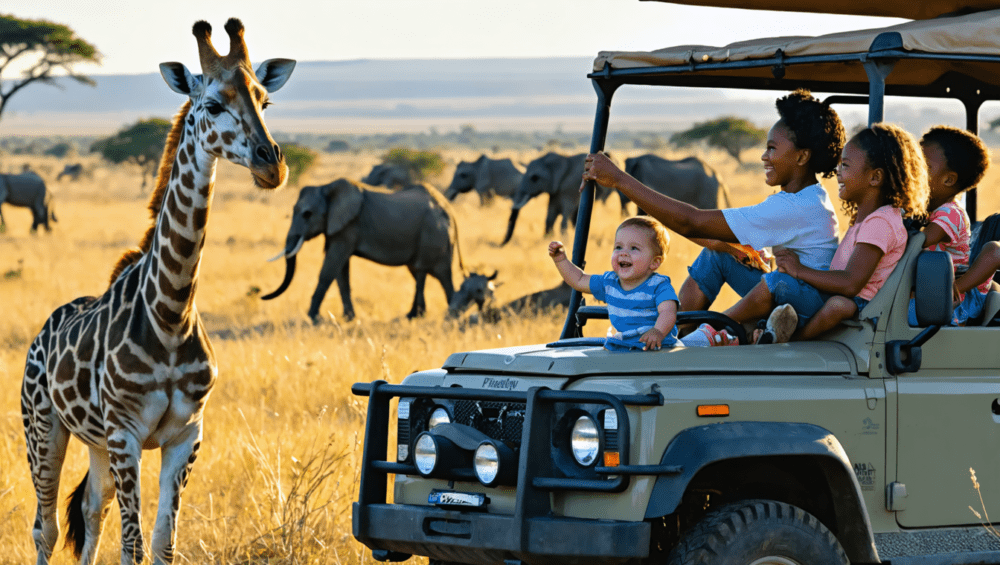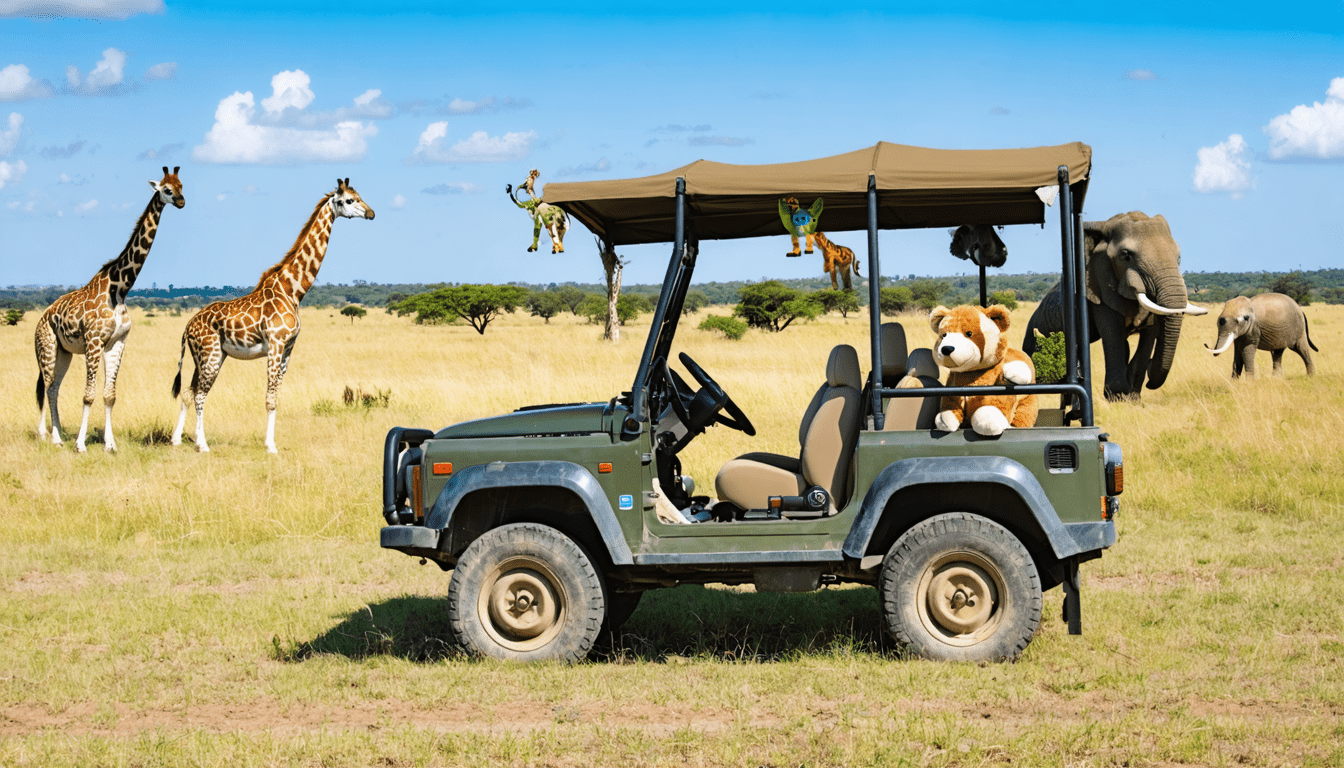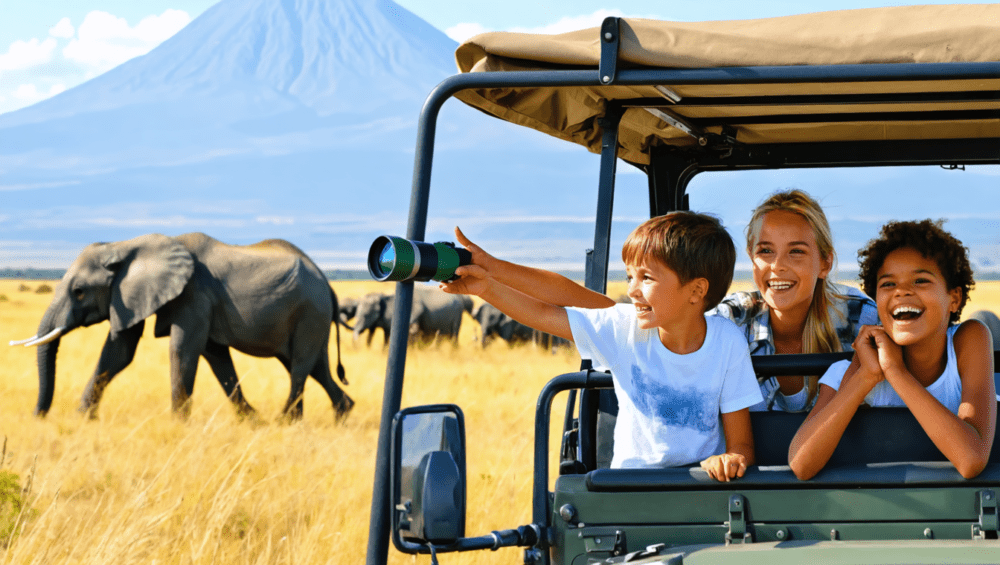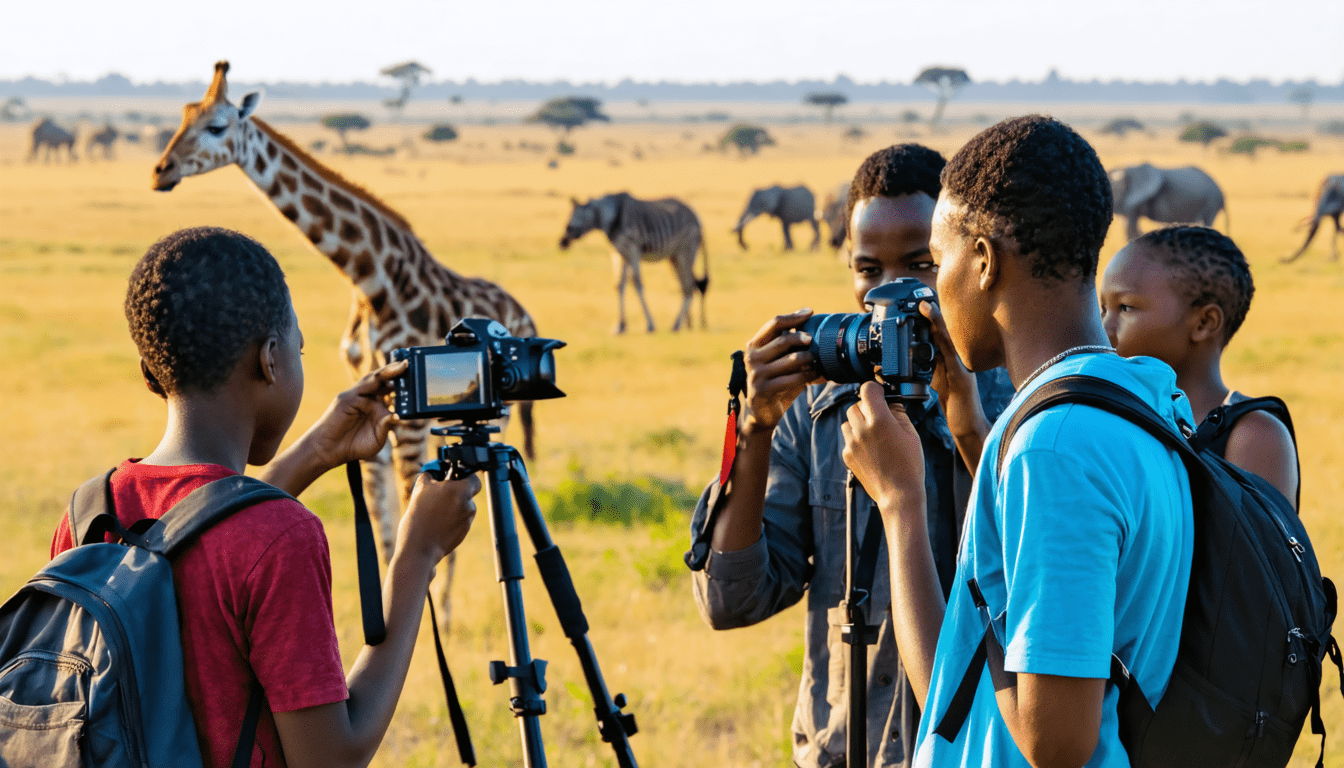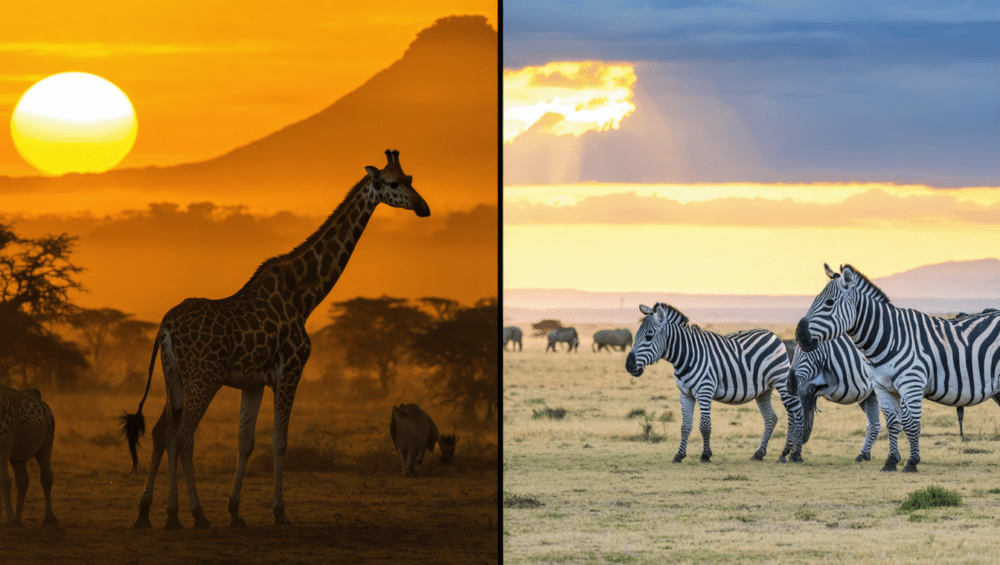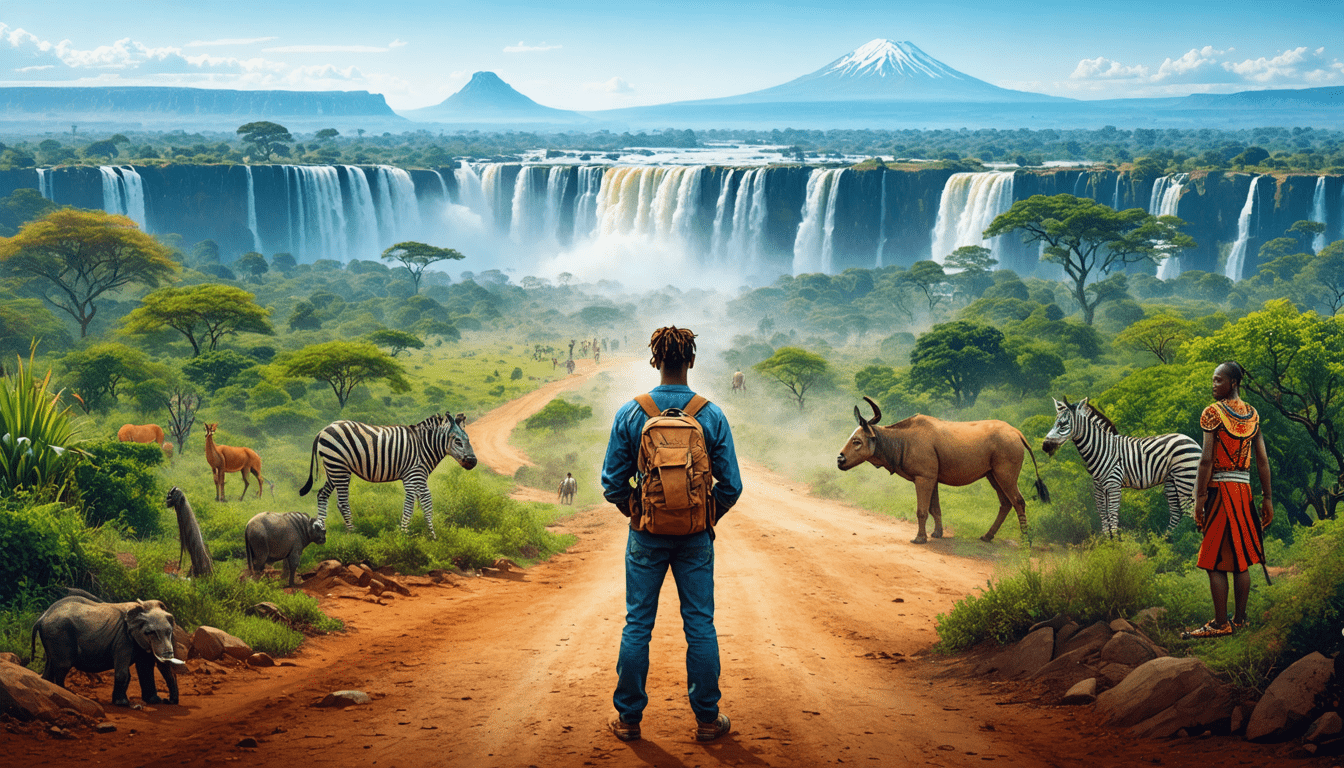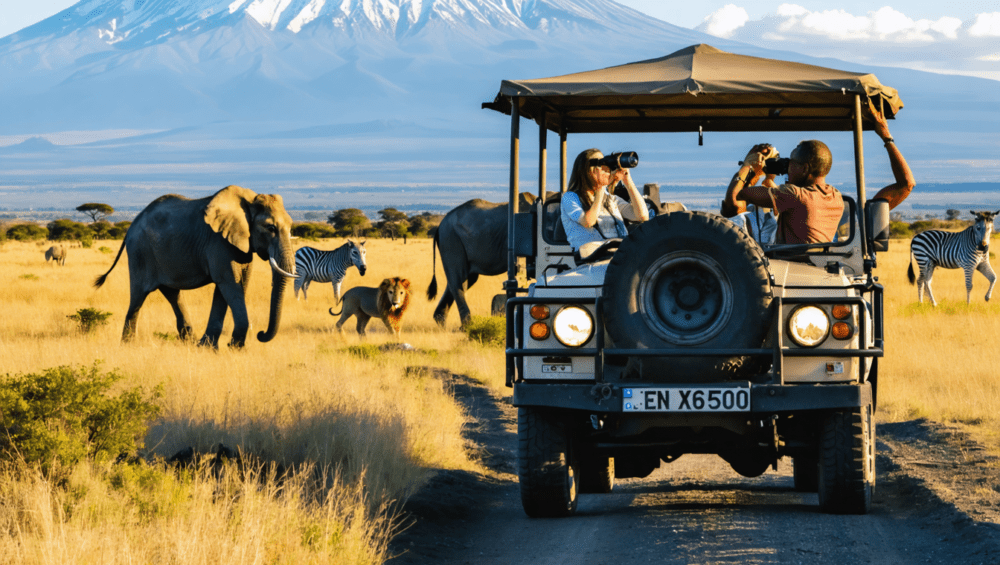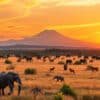What to Consider When Planning Your Safari Trip
Embarking on the Safari Adventure of a Lifetime
Are you ready to swap your concrete jungle for the wild landscapes of Africa? Planning a safari trip is no walk in the park, but let me tell you, it’s well worth the effort. There’s nothing quite like watching a lioness on the prowl or seeing a herd of elephants march across the savannah at sunset. But with so many choices, how do you know where to start? From timing your visit with nature’s grandest spectacles to selecting the perfect wildlife haven, every decision can make or break your safari adventure. So, grab your explorer’s hat, and let’s dive into a journey where the grasslands set the stage for nature’s raw, undisturbed drama.
Deciding the Best Time to Visit: Seasonal Considerations for a Safari Adventure
You wouldn’t wear a winter coat to the beach, right? The same principle applies when timing your African safari. The seasonal rhythms of Africa play a huge role in shaping your wildlife encounters. Imagine the breathtaking sight of the Great Migration, where over a million wildebeest forge rivers in search of lush pastures. This is nature’s epic show, and you’ll want front-row seats. But timing isn’t just about animals; it’s the weather too—will it greet you with golden sunshine or a dramatic downpour? Each season offers something unique, and with a little planning, you can tailor your safari to align with what you crave most.
Choosing the Perfect Safari Destination: Top Wildlife Spots in Africa
Now, picture scrolling through Instagram-worthy snaps from the Serengeti or catching a National Geographic moment in the Masai Mara. Choosing where to go can feel like trying to pick your favorite chocolate in a candy store! Are you aiming for the classic savannah scene, or perhaps you’d prefer the dense rainforests or even the rugged experience of the desert landscapes? Every park and reserve offers its own charm. Your choice could lean on accessibility and creature comforts, or perhaps you are driven by the adventure-centric pulse. Let’s unwrap these destinations so you can pinpoint the perfect backdrop for your wild wanderings.
Essential Safari Packing List: What You Need to Bring for a Successful Trip
A safari isn’t the time to test your fashion runway looks—practicality takes the day. Lightweight khakis, sturdy boots, a wide-brimmed hat, and voila, you’re on your way. But what about your camera? Having the right gear means you’ll capture the roar, not just the moment. Of course, alongside your binoculars and sunscreen, there are the less glamorous but oh-so-essential items like a good insect repellent and a basic first-aid kit. Trust me, a bit of prep beforehand keeps your eyes on the lions, not your blisters!
Maximize Your Safari Experience: Tips for a Memorable and Safe Adventure
Let’s be honest—none of us want our safari stories to include an unexpected close encounter of the wrong kind. Safe wildlife viewing is key not only to your safety but also to the preservation of these majestic beasts. Have you thought about an eco-friendly approach on this trip? Remember, our footprints should disappear long before the last lion’s roar echoes in the night. Engaging with local guides can turn a good trip into a phenomenal one, opening your eyes to the rich tapestry of wildlife and cultures that define these incredible lands. Let’s make your safari not just a trip, but a story worth telling for generations.
Deciding the Best Time to Visit: Seasonal Considerations for a Safari Adventure
Overview of the Various Safari Seasons and Their Pros and Cons
When planning a safari, one of the first things to consider is the best time to visit. Africa, with its diverse landscape and climate, offers different experiences throughout the year. Have you ever found yourself packing for a trip and wondering what kind of weather drama you’re about to walk into? I know I have! Each season in Africa presents unique opportunities and challenges.
In many regions, the year is divided into two main seasons: the dry season and the wet season. The dry season typically runs from June to October. This period is famous for its excellent wildlife viewing opportunities, as water sources become scarce, compelling animals to congregate around the remaining waterholes. Picture all the majestic creatures like elephants, giraffes, and big cats gathering right in front of you! However, this is also the peak tourist season, which means higher costs and busier parks.
On the flip side, the wet season, spanning November to May, transforms the landscape into a lush, green paradise. It’s the perfect time for bird-watchers, as migratory birds make their presence felt, and you get to experience the birth of new life – think adorable lion cubs and zebra foals. But crocs and camera gear don’t always mix well with rain; you may face muddy conditions and some inaccessible roads.
Insights into Animal Migration Patterns and Their Influence on Trip Timing
Have you ever seen photos of the dramatic wildebeest migration and thought, I need to witness that? Timing is everything if you’re hoping to catch one of these epic spectacles. The Great Migration is one such awe-inspiring event. Millions of wildebeest, zebras, and gazelles journey across the Serengeti and Masai Mara from July to October, crossing crocodile-laden rivers in one of nature’s most thrilling spectacles.
But migration isn’t restricted to wildebeests. Many other species have their own migration tales, such as elephants traversing distances in Botswana’s Chobe National Park or the desert-adapted elephants in Namibia’s Damaraland. Checking the timing of these migrations can be key to planning a trip that aligns with your wildlife aspirations.
Weather Conditions and Their Impact on Safari Experiences
I remember standing in the Serengeti, camera in hand, squinting through a cloud of dust. Weather conditions are a significant factor in safari planning, as they can greatly influence the overall experience. Dry conditions mean easier game viewing as animals are more visible without the dense bush cover, and photography is best in the golden light of the early morning and late afternoon.
In contrast, the rainy season arrives with vibrant landscapes and a certain freshness in the air, but also presents unique challenges. Unpredictable weather can lead to sudden downpours, so it’s essential to pack light, waterproof gear. Additionally, sweltering days or chilly mornings and nights are not uncommon, depending on the country and time of year. Knowing about the regional climate helps in packing appropriately for comfort and convenience.
Tips on Selecting the Best Time for a Safari Based on Personal Preferences and Wildlife Activity
Choosing the ideal time for your safari adventure really depends on what piques your interest the most. Are you captivated by vast herds storming across savannas? Then sync your calendar with migration patterns. Or do you relish verdant landscapes and the sight of baby animals taking their first steps? Then the wet season might be your calling.
If you’re someone who dislikes large crowds and prefers a bit of solitude, consider visiting during the shoulder months of April, May, or November. Yes, you may have to brave some rain showers, but you’ll also experience fewer tourist throngs and potentially enjoy a more intimate connection with nature.
Ultimately, researching the different areas and their seasonal highlights can help tailor-make your safari itinerary to ensure it aligns perfectly with your dreams and expectations. And remember, the best safaris often come with a dash of surprise! So, keep an open mind and prepare to be awed by whatever Mother Nature offers during your journey.

Choosing the Perfect Safari Destination: Top Wildlife Spots in Africa
Let’s face it: planning a safari can be as overwhelming as deciding what to watch on Netflix—so many places, so little time! The continent of Africa is packed with safari destinations, each promising its own unique brand of adventure. But where should you (or I) even begin? Let’s take a whirlwind tour of some of Africa’s most iconic national parks and get a feel for what makes each one special.
Serengeti National Park, Tanzania
Ah, the Serengeti—the land of endless plains and the backdrop for countless nature documentaries. Have you ever watched the Great Migration and wondered, Why am I watching this from my couch? Here in the Serengeti, you can witness millions of wildebeests and zebras make their monumental trek across the savannah. The sheer scale of wildlife here is mind-boggling.
If you’re dreaming of luxury tents where you can sip sundowners under the African sky, Serengeti is a solid pick. Keep in mind, though, that luxury doesn’t come cheap. Accessibility is relatively easy thanks to several small airstrips that connect from major cities, and the Tanzanian people are hospitable, eager to share their vibrant culture with you.
Masai Mara National Reserve, Kenya
Now, imagine the Serengeti sprinkled with a bit of Kenyon magic, and you’ve got the Masai Mara. Sharing the same ecosystem as the Serengeti, this reserve offers a front-row seat to the Great Migration. So if you miss it in Tanzania, hop over to Kenya!
The Masai Mara also allows for activities you may not find elsewhere, like hot air balloon rides at dawn—because who doesn’t want to float over herds of elephants while sipping champagne? For budget-conscious adventurers, there’s a range of accommodations from cozy campsites to premium lodges, meaning there’s something for everyone.
Kruger National Park, South Africa
Now, let’s talk about Kruger National Park in South Africa. Here’s a destination that shifts the focus from Big Everything to the Big Five—lion, leopard, rhinoceros, elephant, and Cape buffalo. Kruger is perfect for the first-timer scared of diving into the wilderness without a guide. This place is renowned for its self-drive safaris, offering the thrill of independent exploration.
While the park is one of Africa’s most accessible spots—with a vast network of paved roads—this does mean it gets busy, especially during high season. If you prefer company and enjoy mingling with fellow wildlife enthusiasts, then this park is ideal. Not to mention, South Africa’s diverse culture and excellent accommodations add layers to your adventure.
Factors to Consider for Your Ideal Safari Experience
Let’s say you’re a luxury seeker sipping high tea under the stars, or perhaps you’re more of an adrenaline junkie who thrives on rugged terrains. Your ideal safari will depend on what’s available at each destination. For a plush, indulgent experience, Tanzania and Kenya stand out with their offering of glamorous camps and lodges. Both regions provide the ultimate chic-africa-vibe, complete with butler service and Hemingway-inspired décor.
If you’re a budget traveler or prefer a grittier, more authentic experience, South Africa’s Kruger offers a variety of economical options. Imagine calming yourself down as you sip on a drink from your modest veranda, listening to the melodious chirping of birds.
Finally, match your safari style to the landscapes and how easy or challenging it is to get there. Some spots need a bit of strategic planning to access—oh, the joys of tiny airplane rides or long bumpy paths! But the reward is often in the journey itself.
Key Travel Logistics: Accessibility, Accommodation, and Local Culture
Before you pack your bags (and mosquito spray), let’s geek out over logistics! Accessibility is a biggie—some parks are easier to get to than others depending on your starting point and how you want to travel. Regional flights can make life easier, albeit pricier.
Accommodations range from no-frills campsites and hostels to extravagant lodges fit for a king. Choices pivot on your budget and the type of experience you’re after. And don’t forget to consider the local culture. Engaging with resident communities not only enriches your experience but also contributes to sustainable tourism.
There you have it! Africa’s landscapes are as varied as its wildlife, offering a myriad of safari experiences to cater to every traveler’s desires. It’s all about knowing what you want—adventure, luxury, budget or culture—and finding which location delivers your dream safari. After all, isn’t that what safari is about? Discovering what speaks to you as you explore the wild?

Essential Safari Packing List: What You Need to Bring for a Successful Trip
Detailed Suggestions on Safari Essentials Like Clothing, Gear, and Personal Items
When I was prepping for my first safari, there was this overwhelming moment when I sat in front of my suitcase, staring at the empty space, thinking, What on earth do I pack? If you’re feeling the same way, take a deep breath. Here’s your ultimate guide to packing for the wild adventure that is a safari.
First things first, clothing. Layering is key. Mornings can be brisk but by noon, you’ll be peeling off sweaters faster than a cheetah chasing its prey. Think lightweight, breathable fabrics in neutral colors—beige, khaki, olive green. Not only do they blend well in nature (perfect for sneaking up on those exciting wildlife moments), but they also won’t show every dust trail you gather.
You’ll want comfortable and sturdy shoes too. Remember, your shoes are your best friends in this journey through the savannah. A good pair of hiking boots can save your feet when you’re out on a walking safari, and don’t forget those comfy sandals for lounging back at the camp.
Importance of Packing Lightweight and Versatile Clothing Suitable for Various Climates
It’s all about versatility. Consider packing a couple of long-sleeved shirts to protect against the sun and, effectively, those annoying mosquitoes. A light jacket or fleece will come in handy for those chilly dawn safaris. I’ve even found that a scarf is a mighty useful accessory—it provides warmth, a makeshift pillow, or sun protection!
Packing light doesn’t mean missing out. Choose garments that can do double duty; for example, trousers that roll into shorts. And remember, laundry services are often available at lodges, so you don’t need to pack for every single day.
Recommendations for Photography Equipment to Capture Unforgettable Moments
Face it, your phone’s camera might not cut it for the breath-taking panoramas and incredible close-ups on safari. I recommend a good DSLR or mirrorless camera with a telephoto lens to really capture those distant shots of lions lounging or elephants ambling along. Tripods can be a blessing for steady shots during game drives, though try to keep them compact and portable.
And don’t forget the small stuff! Spare batteries and memory cards are lifesavers. Imagine spotting an elusive leopard, only to run out of memory space because your cousin’s wedding video is still stored on the card. Tragic.
Health and Safety Items to Consider, Such as Sunscreen, Insect Repellent, and First-Aid Supplies
While you’re reveling in Africa’s vast landscapes, it’s crucial to think about health and safety. Sunscreen should always be near the top of your list. Even during cloudy weather, the African sun can be brutal. Trust me, I’ve learned this the hard way after a lobster-like transformation on day one.
And then there’s insect repellent. Mosquitoes, especially around dawn and dusk, are not just a nuisance; they’re a health consideration with the risk of malaria in some areas. Investing in a good repellent with DEET is your best line of defense.
A little first-aid kit is another essential. Accidents don’t plan themselves, so a few band-aids, antiseptic wipes, and pain relievers can go a long way. Throw in some anti-diarrhea meds, because eating new foods always has its surprises.
Lastly, remember your travel insurance details and any personal medications. It’s worth having a note of your medication just in case you need replacements or emergencies arise.
Honestly, with just these essentials, you’ll be ready to embrace the adventure of a lifetime. Your packing woes? They’ll be as distant as last year’s vacation. Do you feel ready to zip up that suitcase yet?

Maximize Your Safari Experience: Tips for a Memorable and Safe Adventure
Best Practices for Wildlife Viewing and Safety Protocols in the Wilderness
When you’re on a safari, you’re not just a tourist – you’re a guest in wildlife’s backyard. Ever wondered how to make the most of this wild encounter without getting too close for comfort? It’s all about respecting boundaries. Picture this: you’re in a 4×4, your camera is ready, and BOOM – there’s a majestic lion just lounging around. Instinct might tell you to get closer, but remember, that’s their living room.
Keeping a safe distance is crucial not only for your safety but for the animals’ well-being too. They don’t need a thousand selfies with curious humans. Listening to your guide is a game-changer. They know the drill, have eyes like hawks, and can often spot a hidden leopard before anyone else. Want a tip? Keep those elephants in clear sight; they’re magnificent but surprisingly stealthy for their size!
Importance of Respecting Wildlife and Maintaining Eco-Friendly Practices
Safari enthusiasts often overlook how their actions can impact the environment. Consider this: if everyone grabbed a souvenir rock or flower, the ecosystem would slowly fade. So, how do we safari without leaving a mark? Stick to designated paths and resist the urge to pluck a little ‘memory’. Think of it as preserving the magic for the next adventurer, maybe your own grandkids.
Packing in and packing out is another golden rule. Sure, a candy wrapper seems like nothing, but imagine the accumulation if 100,000 visitors just like you thought the same thing. And let’s talk recycling – if you’ve been to a park that prioritizes this, it’s your cue to follow suit. Every little bit helps, and it means we get to see rhinos munching on savanna grass instead of plastic bags.
Engaging with Local Guides for a More Enriching and Informed Experience
Ever met someone who knows the land like it’s an extension of themselves? That’s your local guide. Forget online maps; these folks know where the action happens. A friend once told me about her guide in Tanzania who identified birds solely by their calls. Mind-blowing, right?
By choosing local guides, you’re not just getting insider tips; you’re supporting the community. It’s an enriching exchange where you learn more than just animal facts. Imagine hearing a Maasai warrior recount ancient stories as you sit by a fire. Fascinating insights about conservation efforts, animal behaviors, and even folklore can transform an ordinary safari into an extraordinary one.
Activities Beyond Game Drives: Walking Safaris, Cultural Tours, and Night Safaris
Game drives are amazing, but did you know there’s more to dive into? Picture this: walking amidst zebras on a guided walking safari. It’s an adventure that gets your heart racing and reminds you that you’re in the wilderness. You start noticing clues – crispy leaves, footprints – it’s like a puzzle that shares tales of life here.
Ever been curious about the local cultures? Cultural tours are your gateway. They give depth to your safari. Visiting a local village, maybe learning a dance or two, offers a rich perspective on how people have lived side-by-side with the wilderness for generations. Plus, you might get recipes for local dishes that become your dinner table hits back home.
And then there’s the night safari. If you’ve ever wondered what the savanna sounds like under a blanket of stars, this is where magic happens. It’s spooky and mesmerizing. Species like bush babies and elusive predators come to life, and the nocturnal orchestra can be an unforgettable soundtrack.
So, ready to go beyond the traditional safari experience? Whether it’s a lion sighting or a story from your guide, every moment offers something unique to take home – just remember to keep it green and respectful. After all, the wild is at its best when it’s undisturbed and full of surprises, much like life itself, wouldn’t you agree?
Conclusion
Embarking on a safari adventure is nothing short of spectacular, but it does demand a bit of forethought. As we’ve explored, starting with the right timing, picking the perfect destination, packing wisely, and maximizing your experience are the key pillars of planning. Remember when my friend Julia got her trip timing wrong and missed the iconic wildebeest migration? Trust me, it’s something you want to get right!
Whether you’re chasing the thundering herds of the Serengeti or looking to snap the perfect selfie with an elephant in Kruger, each decision impacts the quality of your safari. And while you’re at it, why not consider the off-the-beaten-path locations for a more intimate encounter with nature? It’s all about what kind of experience you’re craving.
In terms of packing, I’ve learned the hard way that less is more—a notion I’m still trying to hammer into my over-pack hubby who once tried squeezing in a tuxedo (for the birds, apparently). And don’t skimp on the essentials like insect repellent unless you fancy being a mosquito buffet.
Finally, the way you immerse yourself during the trip matters a lot. Engage with the locals, cherish the stories your guides share, and take those night safaris for a different perspective. You don’t want to return home realizing you missed out on the real soul of Africa. It’s a trip many dream of for years, so make yours truly unforgettable by following these guidelines. Now, do you feel ready to take on the wild? Go, pack those bags, and create memories that will roar through your stories for decades to come!
